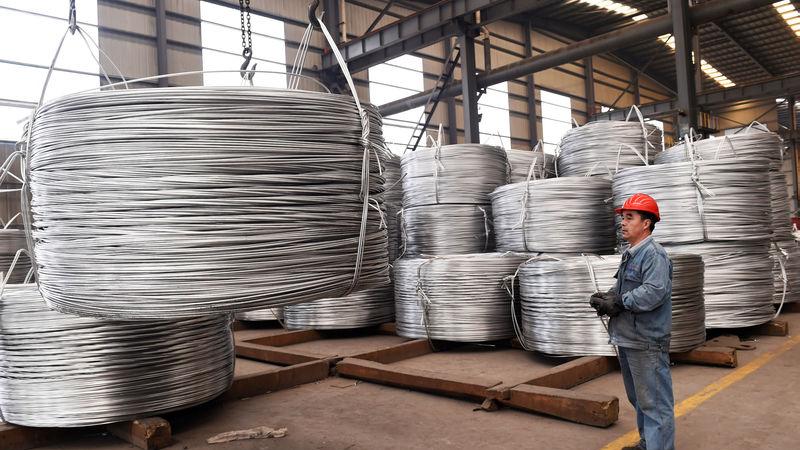Aluminium Gains Aided By A Weaker U.S. Dollar And Bullish Demand Outlook.

Aluminium prices edged up by 0.17% to settle at 238.05, supported by a weaker U.S. dollar and a positive demand outlook. China, a key player in the aluminium market, saw its output rise to 3.515 million metric tons in April, up 4.98% year-on-year. Some aluminium smelters in Yunnan province continued production resumption, contributing to a daily average output of around 117,200 metric tons. With power supply in Yunnan Province recovering and local capacity steadily resuming, domestic aluminium operating capacity is expected to increase further in May. However, attention is warranted regarding the progress of the resumption of remaining production capacities in Yunnan.
Despite positive production trends, aluminium inventories in LME-registered warehouses surged to the highest level in more than 2-1/2 years, doubling in less than a week, fueled by commodity trader Trafigura’s delivery of 424,000 metric tons of aluminium for financial deals. In monetary policy news, the People’s Bank of China (PBoC) injected CNY 125 billion via a one-year medium-term lending facility (MLF) to stabilize the yuan, keeping the interest rate unchanged at 2.50%. The yuan has faced pressure against a strengthening dollar, depreciating by 2% this year due to relatively low yields compared to other economies. Additionally, the PBoC conducted a CNY 2 billion seven-day reverse repurchase operation while maintaining borrowing costs at 1.8%.

Technically, the aluminium market experienced short covering, with a 6.69% drop in open interest to settle at 2,427 contracts, while prices rose marginally by 0.4 rupees. Currently, aluminium has support at 236, with a potential test of 233.8 if this level is breached. On the upside, resistance is expected at 240.6, with the possibility of prices testing 243 upon surpassing this level.
Aluminium prices recently experienced a gain, buoyed by two main factors: a weaker US dollar and a positive outlook on demand [1].
-
Weaker Dollar: A weaker US dollar makes aluminium cheaper for buyers using other currencies. This increased affordability can lead to higher demand and ultimately higher prices.

-
Bullish Demand Outlook: The aluminium market is anticipating strong demand, particularly from China. China is a major consumer of aluminium, and its production recently increased due to smelter restarts in Yunnan province [1]. This rise in production suggests confidence in future demand.
-
Aluminium demand is on the rise and expected to keep climbing in the coming years, driven by a few key trends:
-
Energy Transition: Aluminium plays a crucial role in clean energy technologies like solar panels, electric vehicles, and wind turbines. As the world transitions towards renewable energy sources, demand for aluminium is expected to surge [2, 4].
-
Transportation and Construction: The lightweight and durable properties of aluminium make it ideal for the transportation sector (cars, airplanes) and construction (buildings, infrastructure). Growth in these sectors will further increase aluminium demand [2, 3].
-
Packaging: Aluminium is a popular choice for sustainable packaging due to its recyclability and ability to protect products. Rising demand for eco-friendly packaging solutions is another factor propelling aluminium consumption [3].
Here are some statistics to illustrate the growth projection:
-
A report by CRU International predicts a near 40% increase in global aluminium demand by 2030, reaching 119.5 million tonnes from 86.2 million tonnes in 2020 [2].
-
China, a major consumer, is expected to see its annual aluminium demand reach 43 million tonnes in 2024, up from 29 million tonnes in 2015 [4].
Overall, the aluminium market seems bullish on demand, with the energy transition acting as a significant driver. However, keeping up with this growing demand while ensuring sustainable production practices remains a challenge for the aluminium industry.
-